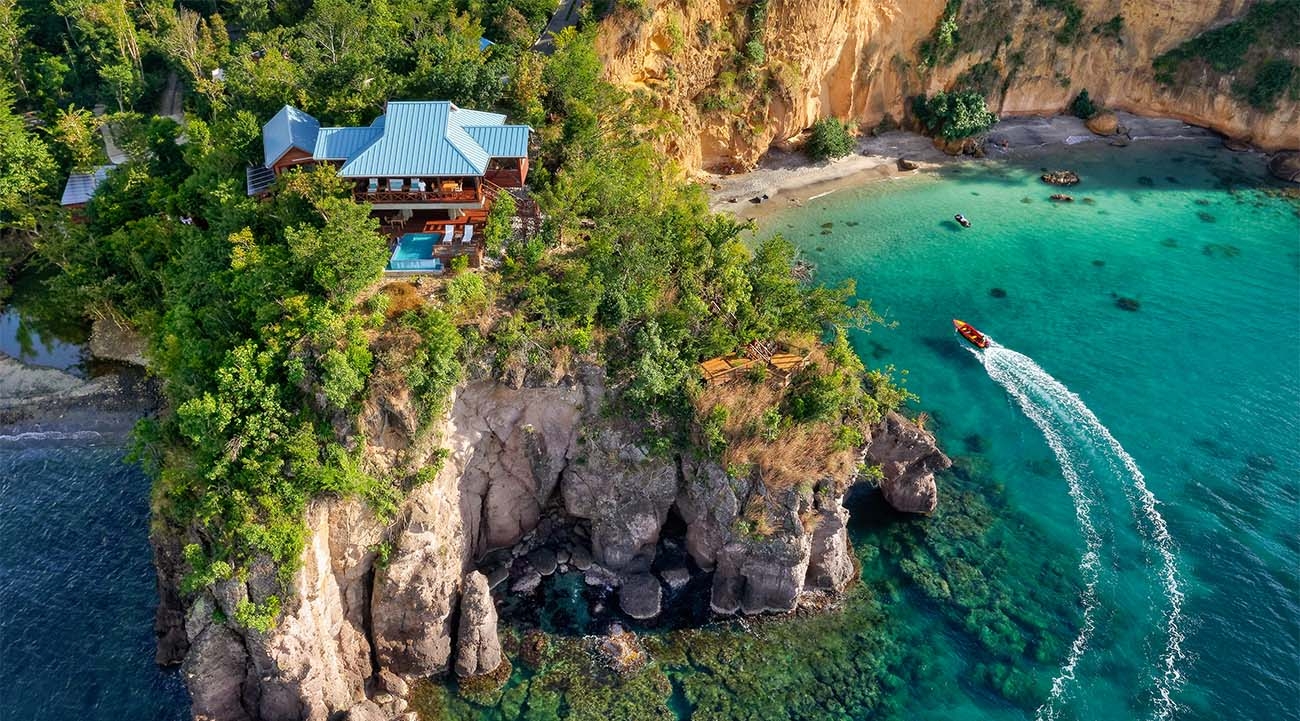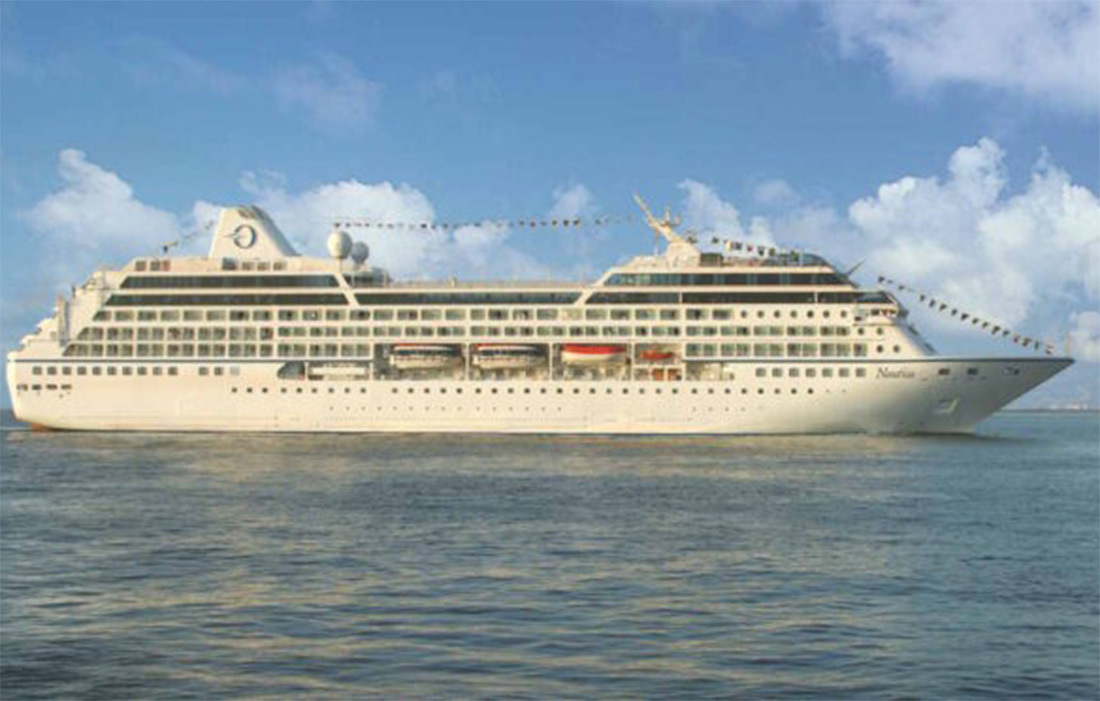Explore the canyons, volcanic craters and rainforests of wild Dominica
I was there for the bubbles. Not the ones you find in a champagne flute, but those fizzing their way to the surface in Dominica, stirred up by seismic activity below the little Caribbean island, which has no fewer than nine volcanoes.
And the best bubbles of all promised to be in the flooded fumarole known as Boiling Lake, a giant gurgling cauldron that is the highlight of a challenging all-day hike in the mountainous Mornes Trois Pitons National Park.
It is why my teenage son and I were following local guide Michael Eugene up into the rainforest on day two of our visit, summiting at 2,900ft to look out from the ridge top at a crumpled carpet of green.
As we descended the other side, the lush landscape morphed into a stark rocky world of red, ochre and grey crisscrossed by streams so hot that my son grimaced when he accidentally stepped in the shallows.
The little whiffs of sulphur hanging on the wind from the start of our hike became a full-on rotten-egg smell, It was here, in the appropriately named Valley of Desolation, that I took a spill, my left leg buckling beneath me and my hopes of seeing the Boiling Lake turned stone cold.
Thankfully Michael was well prepared with a knee brace in his bag along with two sticks that I used, crutch-like, to inch my way back to the start of our (mis)adventure. For the rest of the week, I had to take it easy, so it's a good thing that Dominica isn't just about challenging hikes. It is, though, about getting back to nature.
Forget your average fly-and-flop Caribbean isle: this one, set between Martinique and Guadeloupe - more than 600 miles from the Dominican Republic for which it is often mistaken - is more about rugged interiors than brochure-perfect beaches, with shores fringed by volcanic grey rather than silvery-white sand.
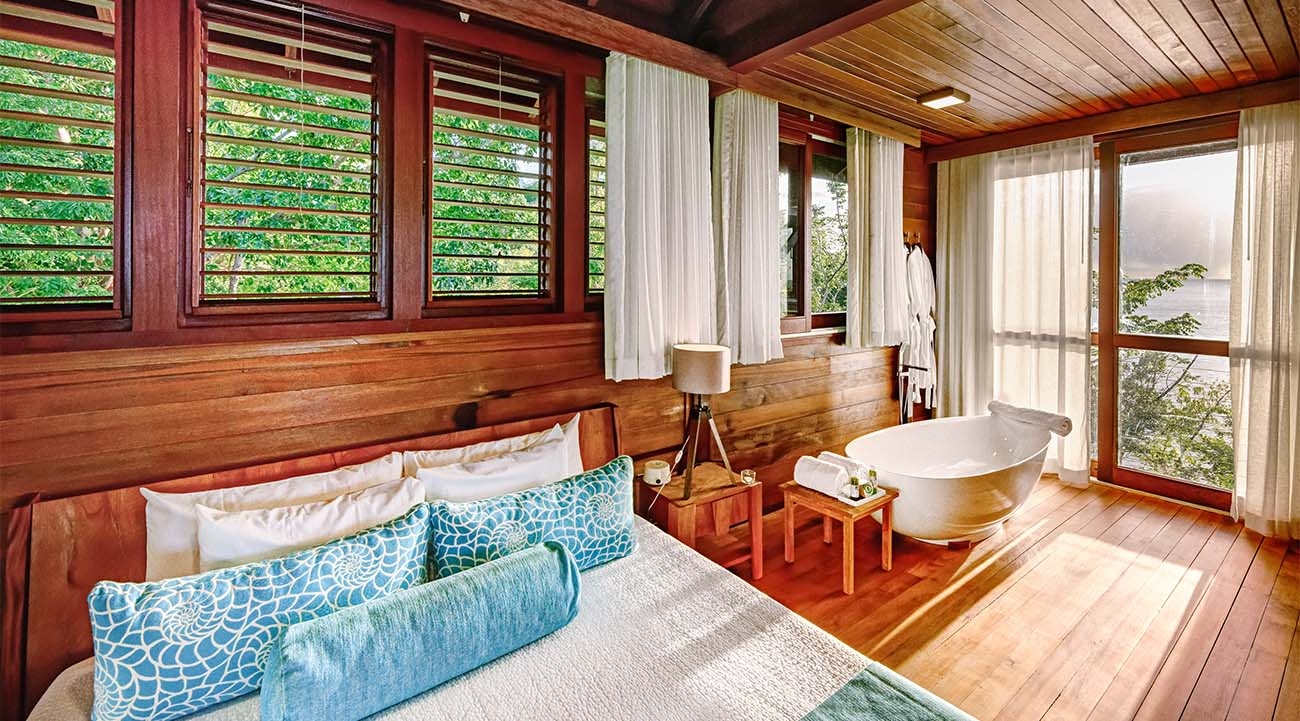
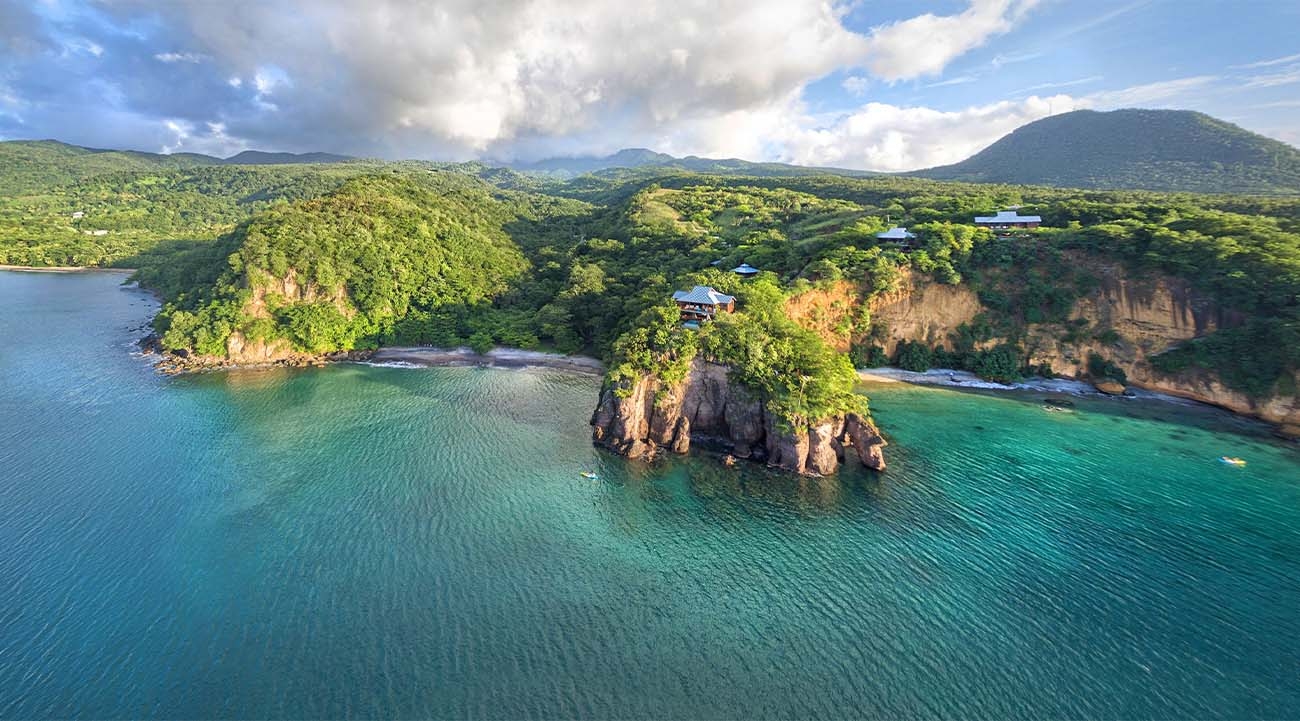
Nature calls
With no international airport, it is reached via Barbados or Antigua, and couldn't be a starker contrast to either, a wild world of tumbling cascades and canyons, lakes pooled in volcanic craters, and rainforest-covered vertiginous slopes.
It is the Jurassic Park of the Caribbean, the island that time forgot. That does not mean you have to rough it when it comes to finding a bed for the night.
In fact, Secret Bay in the north of the island is one of the best Caribbean hotels I have stayed in, offering laid-back luxury in a dozen villas dotted around the rainforest.
Ours had enough space in its tropical hardwood interior to host a party for hundreds, with its inside-outside living area on a raised platform to better appreciate the sea views, a large bedroom with standalone bath and a warm plunge pool on the ground below.
The touch of an iPhone summoned our villa host to make breakfast, or our personal concierge to plan excursions. Most of these were on the water.
I circumnavigated Freshwater Lake, the island's largest at almost six acres, and climbed to Boeri Lake, the island's highest at 2,850ft, clouds swirling around us as at the water's edge.
Neither hike was long - Freshwater Lake took only an hour - but it felt like I was on nature's version of a never-ending stairmaster. "Dominica only has two directions, up and down," chuckled Michael. He wasn't kidding.
More easily reached is the base of the Trafalgar Falls, where we watched twin plumes of water toppling over the near-vertical rockface.
In this pristine area where the Roseau River is born, trees cling impossibly to the sheer sides, bringing a whole new meaning to the term hanging garden. Halfway up the 125ft falls is a natural sulphur pool, its warm water one of Dominica's many places where you can soak tired muscles.
We wallowed instead in the hot spring at the mouth of nearby Titou Gorge after plunging into cold water to swim through the dark cleft speckled by shafts of sunlight.
The gorge's smooth, undulating sides were created when molten lava cooled, then separated, leaving an atmospheric cavern with a waterfall gushing within.
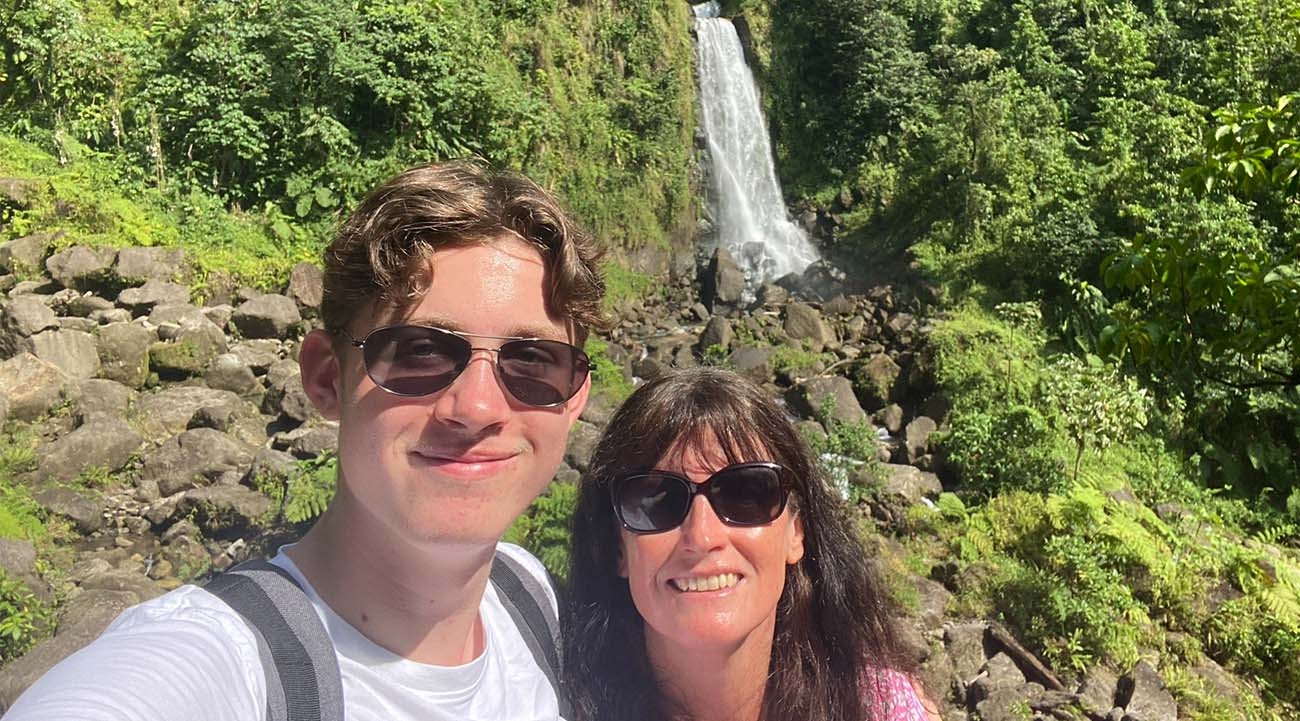
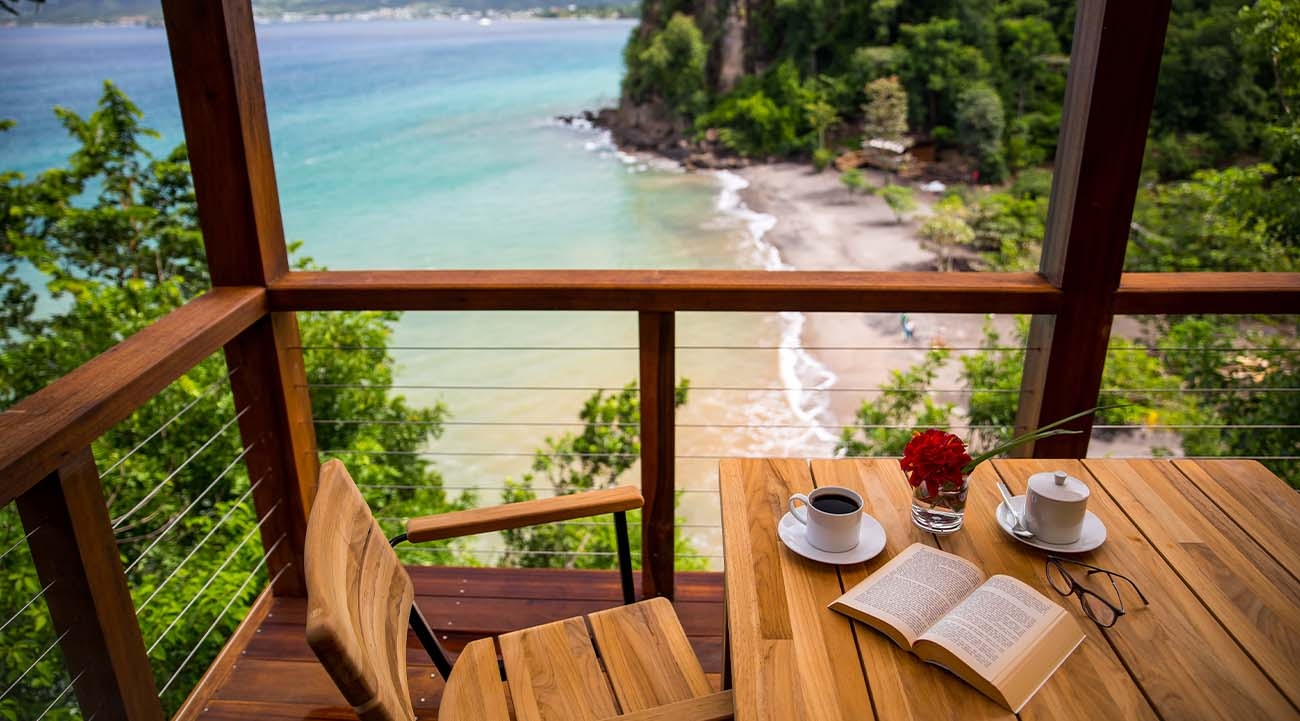

The river wild
While other islands boast that they have a beach for every day of the year, Dominica claims to have 365 rivers instead.
The most famous of these is the Indian River, where the indigenous Kalinago, who still populate the island, once paddled dugout canoes to trade with European ships.
Here, we watched white land crabs scuttle over the ground and a green iguana snake down a tree as we rowed up the waterway fringed with freshwater fems, palm trees and wild hibiscus.
Farther on, buttress mangrove roots twisted together in a riot of wave-like formations, giving the place an enchanted feel even before we spied the wooden hut used in Pirates of the Caribbean: Dead Man's Chest.
Back at our own rainforest retreat, we relaxed on deck, rum punch in hand to watch the sun breathe its last gasp to the sea before a superb meal in the gourmet restaurant. If you want to pick up some tips from chef Fabio Fernandes, he will join you in your villa's fully equipped kitchen to make a tasty lionfish risotto.
It's far from your average cooking class, though - first, you have to catch the fish. And so we took to the seas with Captain Don, leaving Secret Bay's Tibay Beach on our lionfish hunt.
The colourful fish may look exotic, but it is an opportunistic predator that kills off other sea life if its numbers aren't controlled. It hides under rocks on the reef, so spearing one involves free diving - plus a lot of care to avoid the fan of spines.
"If you get stung by one, you are going to cry for your mother," warned Captain Don. This mum wouldn't have been much use: unable to use flippers thanks to my duff knee, I snorkelled lazily on the surface watching the men do the work.
It clearly wasn't as easy as it looked, with my son struggling to dive deep enough in some places, his aim failing in others. Then, just as Captain Don and I were admiring a stingray, the jubilant cry of "I got one!" reached my ears.
We returned to the villa with our fish for a very tasty lunch. We did not have time to find Dominica's resident pod of sperm whales, nor the cash to splash on a licence to swim with them. But we did squeeze in one more snorkelling trip in the south of the island, spying princess parrot fish, squirrelfish, and an encrusted cannon and link from the anchor chain of a 17th-century Spanish galleon.
There was more, too: among the giant barrel sponges looking for all the world like mini volcanic craters on the reef, the water was positively fizzing with bubbles, released from vents in the seabed.
No wonder they call it Champagne Reef; it felt like we were swimming in a giant glass of the stuff. I may not have reached the Boiling Lake, but I got my bubbles after all.
Book it: Elegant Resorts offers a week's half board in Ti-Fey Villa at Secret Bay from £6,525 per person including flights and transfers.
Elegantresorts.co.uk

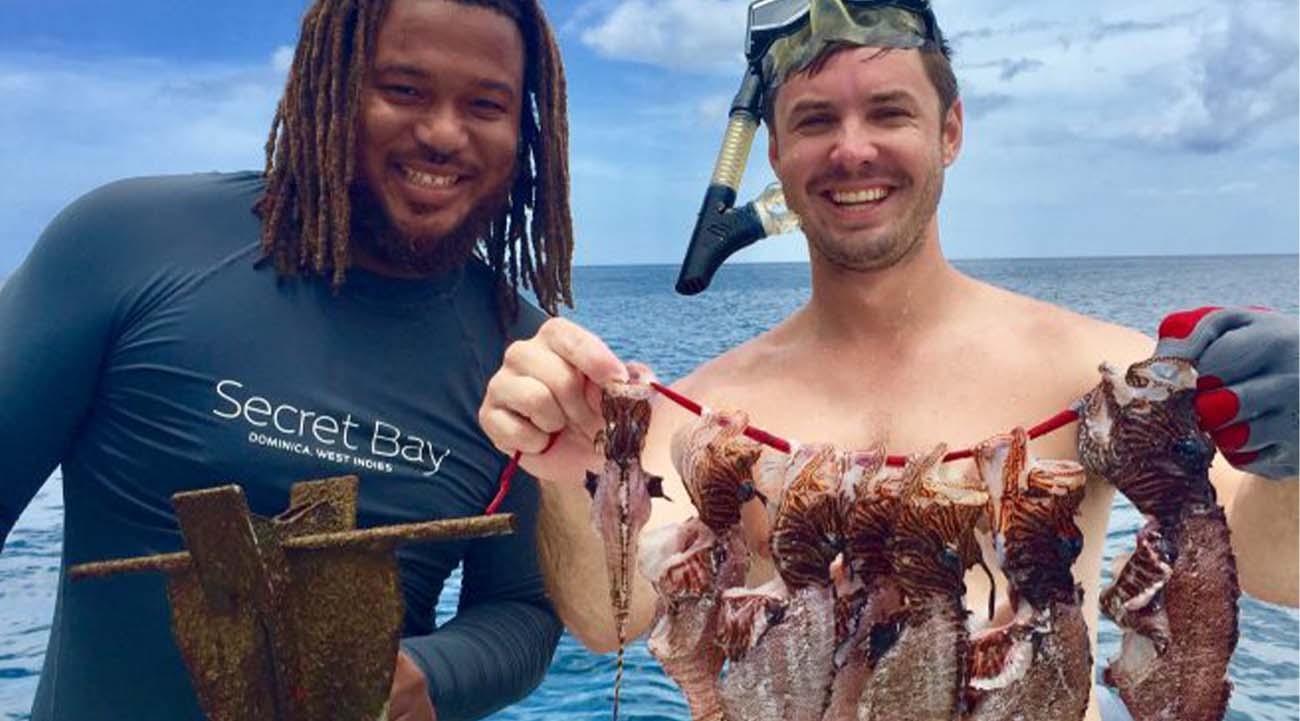
Where to stay in Dominica
Fort young hotel
In the pocket-sized capital of Roseau, this hotel, in an old fort lapped by waves, has Just had a contemporary makeover to attract leisure travellers. Its new all-inclusive programme features daily excursions.
fortyounghotel.com
Jungle Bay Resort & Spa
After it was destroyed by Hurricane Maria in 2017, Jungle Bay relocated near Soufriere, where it has 60 eco villas. It focuses on wellness and nature, with daily activities and yoga.
junglebaydominica.com
Cabrits Resort & Spa Kempinksi
With 150 modern rooms, the Kempinski in the north of the island comes with all the usual resort hotel facilities, including four pools. Cabrits National Park is home to hiking trails and an 18thcentury British garrison.
kempinski.com
